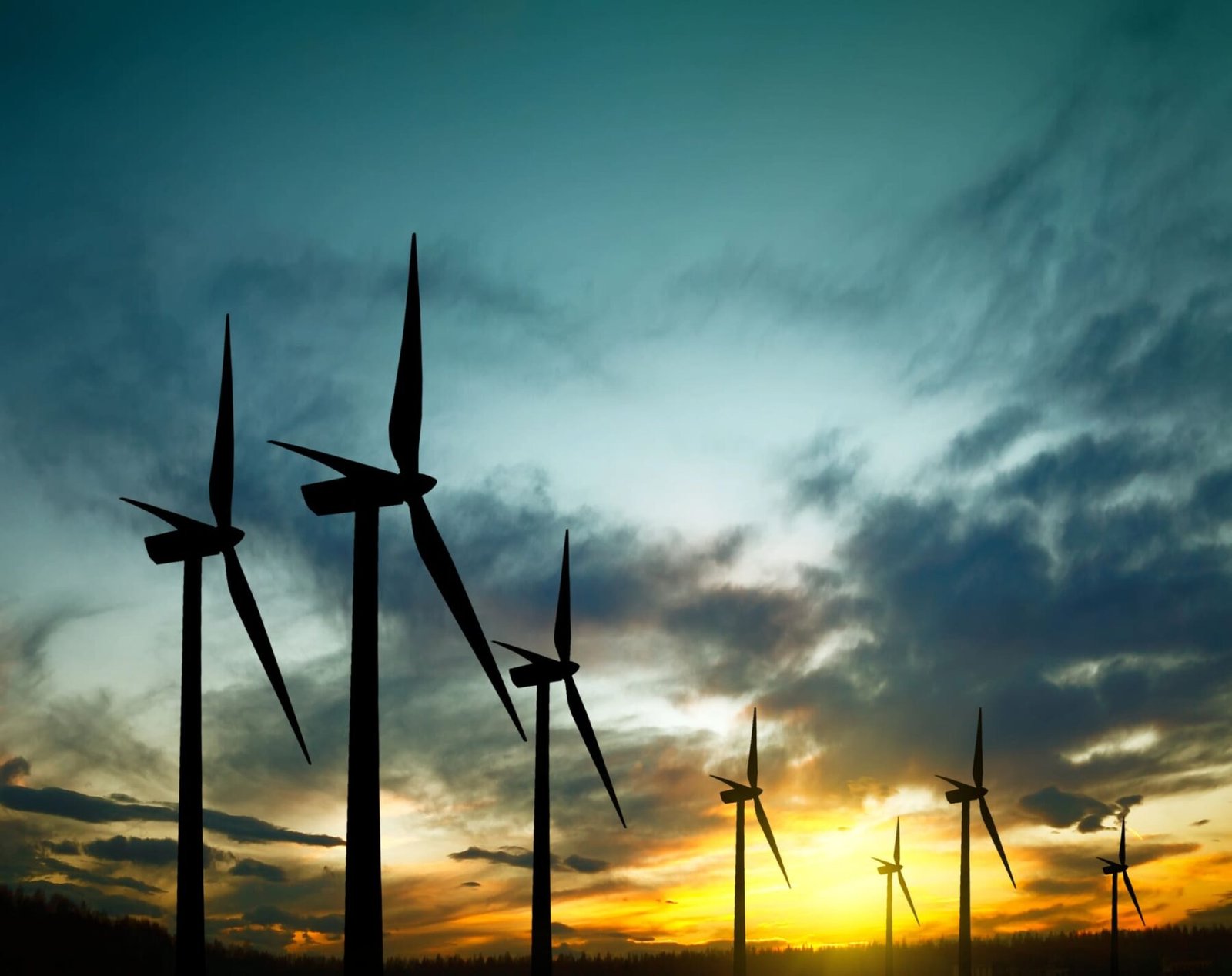Cambios climáticos impactan en energías renovables, desafío para el futuro

The supply of electricity from clean energy sources must increase in the coming years to limit the rise in global temperatures. Otherwise, there is a risk that climate change, the increase in extreme weather events, and water stress will undermine our energy security and even jeopardize the supply of renewable energies, according to a new interinstitutional report by the World Meteorological Organization (WMO).
The relentless burning of fossil fuels has caused droughts that now reduce hydroelectric power and clouds that dim solar production, forcing us to place meteorology and climatology at the center of the energy transition to maximize the use of renewable energies.
Fossil fuels have led to an unsustainable energy system that is endangering life on the planet by triggering climate change. Now, the solution, renewable energies, are also affected by global warming, and new strategies are needed to maximize their use and ensure energy generation.
The race towards renewable energies is accelerating, and despite the challenges posed by the climate crisis, there are signs of progress: Solar panels are beginning to cover deserts, wind turbines dot the coasts, and hydroelectric dams harness the flow of rivers to produce clean electricity.
However, despite the momentum of renewable energies, driven by the decreasing cost of technology and the urgent need to reduce carbon emissions, experts warn of the need to take precautions: As renewable energy sources depend on meteorological conditions, climate change is increasingly dictating and endangering renewable energy production.
Hydropower experienced a significant impact in 2023, marked by volatility that disrupted renewable energy generation worldwide. Temperatures rose 1.45°C above pre-industrial levels, and the transition from La Niña to El Niño altered precipitation, wind patterns, and solar radiation.
Hamid Bastani, an expert in climate and energy at the World Meteorological Organization (WMO), provided a stark example of this impact. «In Sudan and Namibia, hydroelectric production decreased by over 50% due to unusually low rainfall,» he stated.
In Sudan, precipitation totaled only 100 millimeters (less than four inches) in 2023, less than half of the long-term national average.
«These reductions could have significant implications,» Bastani explained, pointing out that the electrical system supplies a large and rapidly growing population of around 48 million inhabitants.
The wind energy sector also faced challenges due to climate change. China, representing 40% of global onshore wind capacity, saw only a modest increase in production of 4-8% in 2023, as wind anomalies disrupted generation. In India, production decreased due to weak monsoonal winds, while some regions in Africa experienced even greater losses, with a 20-30% drop in wind production.
In South America, on the other hand, clear skies and high solar radiation boosted the performance of solar panels, particularly in countries like Brazil, Colombia, and Bolivia. This region saw an increase of 4-6% in solar energy generation, translating to approximately three terawatt-hours of additional electricity, enough to power over two million homes for a year at an average consumption rate.
Roberta Boscolo and Hamid Bastani, among others, collaborated on a recent study by the World Meteorological Organization (WMO) and the International Renewable Energy Agency (IRENA), examining how the climatic conditions in 2023, influenced by El Niño, global warming, and regional extremes, would impact both renewable energy generation and energy demand worldwide.
Boscolo, who has worked at the intersection of climatology and energy policy for years, highlighted the vulnerability of renewable energy infrastructures. Dams, solar farms, and wind turbines are designed based on past climate patterns, making them susceptible to climate change.
For instance, the hydroelectric sector relies on predictable seasonal flows, often fed by glacier melt or runoff. «Hydroelectricity will increase in the short term with glacier melt. But when the glaciers disappear, the water will disappear. And that is irreversible, at least on a human scale.»
This scenario is already unfolding in regions like the Andes and the Himalayas. If glacier meltwater disappears, countries will have to change how they generate energy or face long-term energy deficits.
A recent report by the United Nations Environment Programme (UNEP) highlighted the increasing risks posed by rising sea levels and stronger storms to energy production facilities, including solar farms near the coasts. Additionally, more intense and frequent wildfires can knock down power lines and leave entire regions without electricity, while extreme heat can reduce the efficiency of solar panels and strain the grid infrastructure, especially when cooling demand peaks.
Nuclear power plants are also at risk due to climate change. «We’ve seen nuclear plants unable to operate due to lack of water… for cooling,» said Boscolo. As heatwaves become more frequent and river levels drop, some older nuclear facilities may become unviable in their current locations.
«This is something that we will have to look at with different eyes in the future. When we design, build, and plan energy infrastructure, we have to really think about what the future climate will be, not what the past climate was.»
To adapt to the future, Boscolo and Bastani emphasized the need to embrace what they call climate intelligence: integrating forecasts, data, and climate science at all levels of energy planning.
«In the past, energy planners worked with historical averages,» explained Bastani. «But the past is no longer a reliable guide. We need to know what the wind will do next season, how precipitation will be next year, not just how it was a decade ago.»
For example, in Chile, hydroelectric generation increased by up to 80% in November 2023 due to unusually high rainfall. Although this increase was climate-driven, experts believe that advanced seasonal forecasting could help dam operators better anticipate such events in the future and manage reservoirs more effectively.
Likewise, wind farm workers can use forecasts to schedule maintenance during low-wind periods, minimizing downtime and avoiding losses. Grid operators can also plan for energy peaks during heatwaves or droughts.
«Now we have forecasts that span from seconds to several months,» Bastani explained. «Each one has a specific application: from immediate grid balancing to long-term investment decisions.»
Artificial intelligence (AI) is playing a role in this effort: Machine learning models trained on climate and energy data can now predict resource fluctuations with greater resolution and accuracy. These tools could help optimize when to deploy battery storage or shift energy between regions, making the system more flexible and responsive.
«These models can help operators better anticipate wind, rain, or solar radiation fluctuations,» Bastani added.
Two recent energy projects by the World Meteorological Organization (WMO) demonstrate how artificial intelligence can be applied to renewable energy planning in the real world.
In Costa Rica, the agency collaborated with national energy authorities to develop and apply an AI-based model for short-term wind speed forecasting. The tool is now integrated into the internal energy forecasting platform of the Costa Rican Electricity Institute, helping optimize operations at selected wind farms.
In Chile, another project focused on floating solar technology, using AI to estimate evaporation rates in reservoirs. The results, now integrated into Chile’s official Solar Energy Explorer platform, showed that floating solar panels can reduce water evaporation by up to 85% in summer, with a national average of 77%.
The promise and challenge of climate-smart renewable energy planning are more evident in the Global South. Africa, for example, has some of the best solar potential on the planet, yet only 2% of global renewable energy is installed on the continent.
«In many parts of the Global South, there simply aren’t enough observational data to create accurate forecasts or make energy projects financially viable,» Boscolo said. «Investors need reliable long-term projections. Without that, the risk is too high.»
The World Meteorological Organization (WMO) is working to improve meteorological and energy surveillance in underserved regions, but progress is uneven. The agency calls for more funding for local data networks, cross-border energy planning, and climate services tailored to regional needs.
«It’s not just about mitigating climate change,» Boscolo added. «It’s a development opportunity. Renewable energy can bring electricity to communities, drive industrial growth, and create jobs if systems are designed correctly.» Bastani believes that energy companies and climatologists need to share data globally.
«There is a huge untapped potential in data collected by the private sector… integrating historical and real-time observations from power plants, solar, wind, hydroelectric, and even nuclear plants can significantly improve meteorological and climate models. We all benefit.»
Another key measure to ensure clean energy in the near future is diversification. Relying too heavily on a single renewable source can expose countries to seasonal or long-term climate changes, as Bastani explains.
In Europe, for example, energy planners are increasingly concerned about the phenomenon known as ‘dunkelflaute’, a period of cloudy and windless weather in winter that hampers both solar and wind energy. This has led to calls for more energy storage and backup power.
«A diversified combination is essential, including solar, wind, hydro, battery storage, and even low-carbon sources like geothermal, especially as extreme weather becomes more frequent.»
As the world moves towards a future powered by renewable energy, it is imperative to address the challenges posed by climate change. The volatility experienced in 2023 underscores the need for climate-smart planning and infrastructure that can withstand unpredictable changes in weather patterns.
For renewable energies to truly fulfill their promise, the world must invest not only in expanding capacity but also in building a system that is resilient, adaptable, and based on the best available climate science.
Experts from the World Meteorological Organization (WMO), such as Hamid Bastani and Roberta Boscolo, emphasize the importance of integrating climate intelligence into energy systems to ensure their reliability and resilience.
By leveraging advanced forecasting and artificial intelligence, we can better anticipate and adapt to these changes, optimizing renewable energy production and safeguarding our future.
The future of energy is not just about more wind turbines and solar panels but also ensuring they can withstand the same forces they are meant to mitigate.
FUENTE






